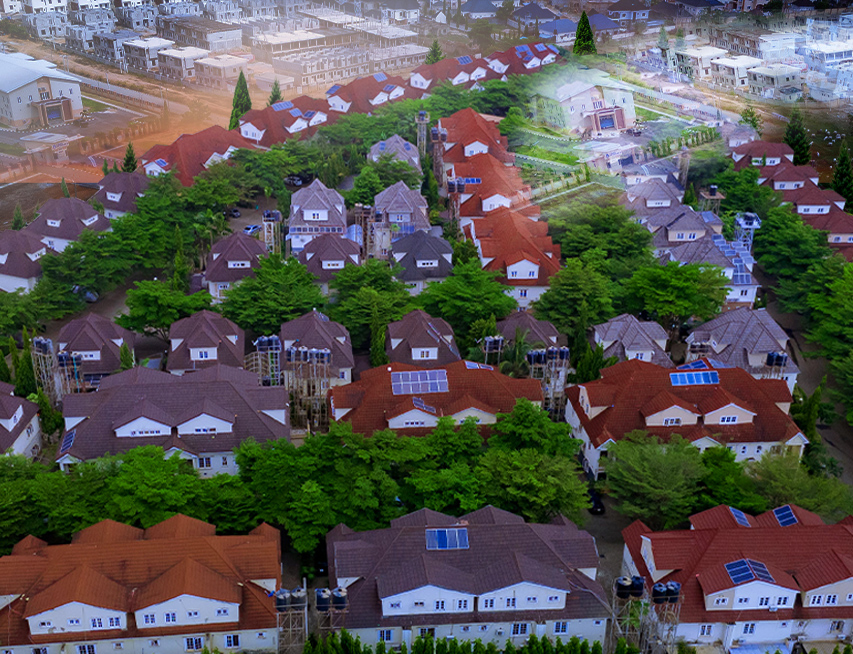Infrastructure is one of the strongest forces influencing real estate growth today. Across Nigeria
and many other developing regions, new government and private projects such as better roads,
bridges, transport systems, digital networks, industrial hubs, and community facilities are
changing the way cities expand and how people choose where to live or invest. These
developments not only improve daily life, they also create new real estate opportunities and raise
property values in places that were once ignored.As more infrastructure projects are launched,
investors, homeowners, and developers are beginning to look at real estate differently. Many now
watch government plans closely, because they understand that any improvement in connectivity,
access, or public amenities can create instant demand in surrounding areas. Simply put: where
infrastructure goes, real estate growth follows.
1. Better Transportation Opens Up New Places to Live
Transportation remains the biggest driver of real estate growth. When new highways, wider
expressways, interchanges, flyovers, or bridges are built, previously distant or undeveloped
areas become much easier to reach. This often leads to new housing developments, shops, and
commercial activity.
A location that once felt “too far” from the city can suddenly become a practical place to live.
This is happening around major cities like Lagos, Abuja, Port Harcourt, and others, where
improved roads are opening up new neighborhoods and making them more attractive to first-
time buyers and families.
Interestingly, property prices in these areas often begin to rise long before the projects are even
completed. Just the announcement of a major road or transport project can spark interest from
developers and investors who want to buy early.
2. Digital Infrastructure Is Creating New Business and Lifestyle Hubs
Today, infrastructure is not only about roads it also includes digital services like fiber-optic
internet, broadband expansion, and technology hubs. As businesses become more digital and
remote work becomes more common, areas with strong internet access and modern work
facilities are becoming more desirable.In cities like Abuja, new coworking centers and innovation
hubs are attracting startups, entrepreneurs, and young professionals. These individuals prefer
living close to workspaces that offer good internet, security, convenience, and modern facilities.
As a result, real estate developers are responding with mixed-use buildings spaces that combine
offices, homes, and retail services.
Areas investing heavily in digital infrastructure tend to develop faster because they attract
educated workers, tech companies, and creative industries. Over time, they grow into lively,
dynamic communities.
3. Industrial Zones and Logistics Hubs Are Transforming Suburban Markets
Another major influence on real estate is the rise of industrial and logistics infrastructure. Whengovernments or private companies build industrial parks, manufacturing zones, ports, or transport terminals, they create thousands of jobs. This leads to rapid real estate development in
nearby neighborhoods. Workers want affordable housing close to their jobs, retailers want to serve these new communities, and companies want land for warehouses or distribution centers.
This chain reaction turns once-quiet suburban areas into new economic centers. In some states,
the presence of an industrial hub has completely changed land values within a few years,
showing just how powerful these projects can be.
4. Social and Recreational Infrastructure Increases Property Value
Infrastructure is not only about movement and connectivity. Facilities like parks, hospitals,
schools, shopping centers, stadiums, and community spaces also make neighborhoods more
valuable.
For instance, in Abuja, recent land-use debates about recreational spaces show how important
parks and green areas are to city planning. Buyers today want more than just a house,they want
lifestyle benefits. Neighborhoods with good schools, reliable healthcare, and places for
relaxation often command higher real estate prices. This is especially true for middle and upper
income buyers who prioritize comfort, safety, and convenience. Developers therefore pay close
attention to where social amenities are available or planned.
5. Infrastructure Helps Predict the Next Real Estate Hotspots
One of the smartest strategies for property investors is to watch where new infrastructure
projects are proposed. Areas that look undeveloped today may become booming markets once a
major road, railway, airport expansion, or government facility is announced. Cities like Lagos and
Ibadan already show this pattern, with new developments driving significant interest. Delta State
is also seeing more real estate activity as infrastructure projects and land allocations grow.
Investors who act early often enjoy the highest returns because they buy before the area
becomes widely recognized.
Overall, infrastructure remains one of the most reliable indicators of future real estate growth.
Whether the projects involve transportation, digital networks, industrial zones, or community
amenities, they all have the ability to revive neighborhoods, create new opportunities, and
reshape entire regions.
For anyone involved in real estate, buyers, sellers, investors, or developers staying informed
about upcoming infrastructure plans is now essential. Understanding these trends can help
people make smarter decisions and take advantage of the opportunities created by Nigeria’s
rapidly changing landscape.


